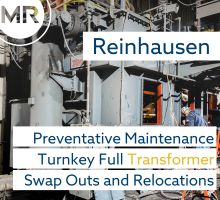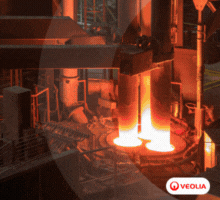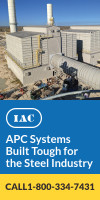Pohang’s Third Blast Furnace Sets World Record for Productivity
11/14/2007 - Posco’s Pohang Works sets a new world record for furnace productivity with its third blast furnace, which produced 12,300 tonnes of molten metal a day using a “drastically increased” oxygen-enriched blast.
The third blast furnace at Posco’s Pohang Works has set a new world record for furnace productivity.
The facility’s third blast furnace posted 2.83 in average furnace productivity, which the company says is a new world record in terms of productivity for a large-sized blast furnace with an internal capacity of more than 3000m3.
The facility’s steel manufacturing department produced 12,300 tonnes of molten metal a day in the blast furnace—20% higher than its design capabilities. The department also produced 60,000 tonnes more than the monthly plan, which will result in annual profit of 70 billion won, according to the company.
To achieve low costs and a highly efficient production, Pohang Works’ steel manufacturing department used up to 190 kg of grained coal per ton of molten metal, instead of costlier (but commonly used) coke. In addition the department enhanced product quality over this time period by lowering the silicon level.
The new world record in furnace productivity was made possible because of the new technology that helps to distribute suitable materials to large-sized blast furnaces. Enhanced ventilation conditions also helped to improve the oxygen-enriched blast and wind systems.
By disregarding the idea that drastically raising the oxygen-enriched blast would negatively impact the inner condition of furnaces, Posco achieved progress. The company took an active risk by increasing the oxygen-enriched blast by more than two times, and by sharply reducing the costs of coke.
The steel manufacturing department has focused 70% of its six-sigma tasks on processing in the third blast furnaces, reviewing the steel manufacturing technology in monthly information exchanges with the Gwangyang Works’ steel manufacturing department. The department is planning to stabilize its operation technology on high discharge rate by closely analyzing the high discharging condition, including analysis of the effect of molten iron on the brick lining.
To achieve low costs and a highly efficient production, Pohang Works’ steel manufacturing department used up to 190 kg of grained coal per ton of molten metal, instead of costlier (but commonly used) coke. In addition the department enhanced product quality over this time period by lowering the silicon level.
The new world record in furnace productivity was made possible because of the new technology that helps to distribute suitable materials to large-sized blast furnaces. Enhanced ventilation conditions also helped to improve the oxygen-enriched blast and wind systems.
By disregarding the idea that drastically raising the oxygen-enriched blast would negatively impact the inner condition of furnaces, Posco achieved progress. The company took an active risk by increasing the oxygen-enriched blast by more than two times, and by sharply reducing the costs of coke.
The steel manufacturing department has focused 70% of its six-sigma tasks on processing in the third blast furnaces, reviewing the steel manufacturing technology in monthly information exchanges with the Gwangyang Works’ steel manufacturing department. The department is planning to stabilize its operation technology on high discharge rate by closely analyzing the high discharging condition, including analysis of the effect of molten iron on the brick lining.



.jpg?lang=en-US&ext=.jpg)
-(1).gif?width=220&height=200&mediaprotectionhash=8011a71ede637cd523c67b1296fc49e6151560fde821a46f29cc85998cc76615&ext=.gif)



